The Dachau Death Train"These people were stuffed in these cars. The cars had bullet holes all over them, evidently from strafing on the way to Dachau. Most of the GIs just stood there in silence and disbelief. We had seen men in battle blown apart, burnt to death, and die many different ways, but we were never prepared for this. Several of the dead lay there with their eyes open, a picture I will never get out of my mind. It seems they were looking at us and saying, 'What took you so long?'" Private John Lee, 45th Division soldier who was one of the first men on the scene 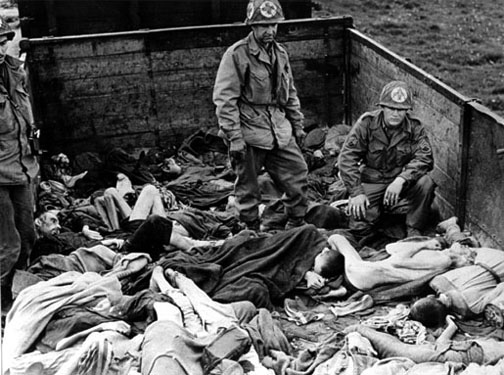 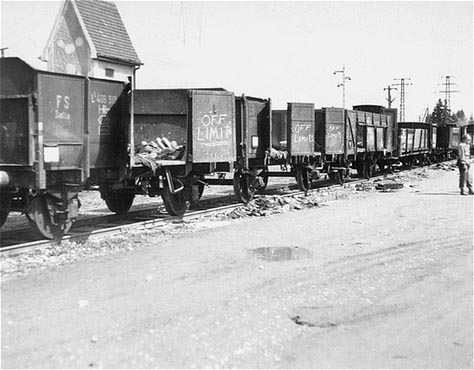 In retrospect, the soldiers of the US Seventh Army, who participated in the liberation of Dachau on 29 April 1945, all agree that it was the grisly discovery of the abandoned "Death Train," on a city street just outside the Dachau SS complex, that caused them to break the rules of civilized warfare by summarily executing Waffen-SS soldiers, stationed at the garrison next door to the concentration camp, after they had surrendered. The 45th Thunderbird Division, which did the shooting of these POWs, had come upon an abandoned train of Italian railroad cars just before they entered the SS training camp through the railroad gate on the west side of the Dachau SS complex. They were sickened by the sight of a long line of railroad cars filled with the dead bodies of emaciated prisoners, some dressed in rags but others naked. 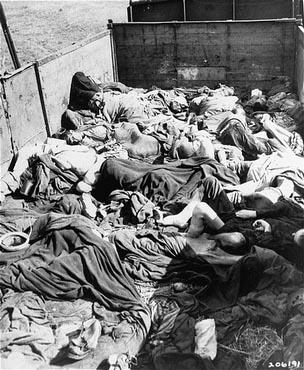 In his book "Deliverance Day," Michael Selzer wrote that the American liberators marched 122 SS soldiers, who had surrendered at the Dachau Concentration Camp, to a wall and with their hands up, shot them with machine guns. Included was the alleged Commander of the SS garrison, Lt. Heinrich Skodzensky, who had only moments before surrendered the camp to Colonel Jackson of the 45th Thunderbird division, saying in English, "I am the commanding officer of the guard in the camp, and I herewith surrender the camp to your forces." Skodzensky was shot along with the others, dressed in his immaculate black SS uniform, according to Selzer's account. Robert H. Abzug wrote in his book "Inside the Vicious Heart" that the American soldiers were enraged by Skodzensky's clean uniform and shined boots in these squalid surroundings. However, no records of an SS officer named Skodzensky have ever been found and the story of 122 SS soldiers being shot has never been corroborated by any of the American soldiers who were there. The Dachau Memorial Site has no record of Lt. Heinrich Skodzensky in its archive and there is no record of a man named Heinrich Skodzensky in the Berlin Bundesarchiv. In a letter to author Sam Dann, which was published in his book "Dachau 29 April 1945," Private Sam S. Platamone recalled what it was like on that fateful day when he was an 18-year-old soldier with the 42nd Infantry Division: "I saw, on a railroad siding, just outside the Camp, a train of some fifty boxcars and each contained about thirty dead bodies. I understand that this train had just arrived from another Death Camp called Buchenwald, near Weimar in Germany. This served as a harbinger of the hell we could expect to encounter when we entered the Camp, itself. The SS had allowed the train to remain on the siding for a number of days, without providing the prisoners with food and water. Most died of exposure, malnutrition and dehydration. Rather than allow the survivors the joy of liberation - just before we arrived, the SS mounted heavy machine guns along the siding and fired into each boxcar. Some prisoners managed to get out, but they were methodically gunned down." Since 18-year-old Sam S. Platamone was not there when the SS men allegedly fired into the boxcars, he probably got this story from one of the prisoners who did not know that the Germans did not have "heavy machine guns." The Germans had MG-42 machine guns at that time or some early modification of this weapon. No heavy machine guns were produced in Germany between 1933 and 1945. This story is either a complete lie, or it was American heavy machine guns that were fired into the death train to kill the first SS soldiers who had surrendered. Brig. Gen. Henning Linden and an advance party from the 42nd Rainbow Division of the US Seventh Army also saw the train, as they neared the gate on the southwest side of the SS complex where 2nd Lt. Heinrich Wicker was waiting to surrender the concentration camp to the Americans. 1st Lt. William Cowling, who was with Brig. Gen. Linden wrote the following in a letter to his parents the next day: "We ride in a Jeep with a guard out ahead of the boys and we were several hundred yards ahead as we approached the Camp. The first thing we came to was a railroad track leading out of the Camp with a lot of open box cars on it. As we crossed the track and looked back into the cars the most horrible sight I have ever seen (up to that time) met my eyes. The cars were loaded with dead bodies. Most of them were naked and all of them skin and bones. Honest their legs and arms were only a couple of inches around and they had no buttocks at all. Many of the bodies had bullet holes in the back of their heads. It made us sick at our stomach and so mad we could do nothing but clinch our fists. I couldn't even talk. 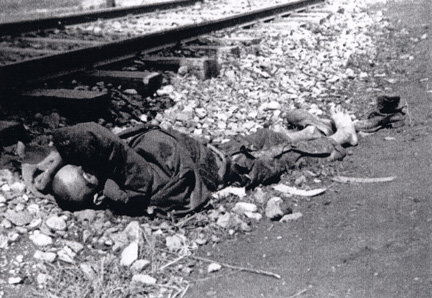 Brig. Gen. Linden and his party continued on towards the gate on the southwest side of the camp where they saw Red Cross representative Victor Maurer waving a white flag to attract their attention. Before Maurer could explain the terms of the surrender that he had negotiated with 2nd Lt. Wicker, Brig. Gen. Linden took Maurer and Wicker to the Death Train so that photographs could be taken of them beside the train. Maurer wrote, in a report that he filed after liberation, that there were 500 cadavers on the train, some that had been killed, in his opinion, and some that had died of hunger. The American liberators could not comprehend the unmitigated disaster which they had unexpectedly discovered. Over and over again, these soldiers would say that they did not know why they were fighting this war until they saw Dachau and the Death Train. The photograph below shows clothing taken from the prisoners on the death train. The clothing was going to be deloused in the Dachau disinfection chambers, so that it could be used by the prisoners who were still living. 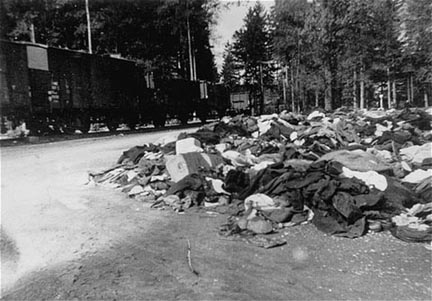 The next day, on April 30, Marcus J. Smith arrived with US Army DP Team 115 to take over the camp after the liberation. In a book published in 1972, "The Harrowing of Hell," Smith wrote the following: Refuse and excrement are spread over the cars and grounds. More of the dead lie near piles of clothing, shoes, and trash. Apparently some had crawled or fallen out of the cars when the doors were opened, and died on the grounds. One of our men counts the boxcars and says that there are thirty-nine. Later I hear that there were fifty, that the train had arrived at the camp during the evening of April 27, by which time all of the passengers were supposed to be dead so that the bodies could be disposed of in the camp crematorium. But this could not be done because there was no more coal to stoke the furnaces. Mutilated bodies of German soldiers are also on the ground, and occasionally we see an inmate scream at the body of his former tormentor and kick it. Retribution! 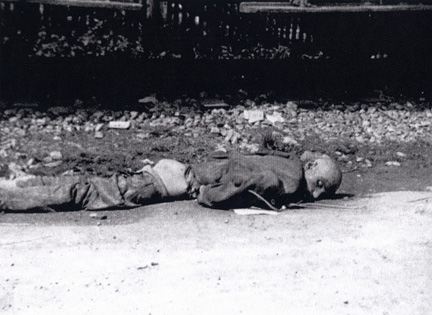 After the war, an American Military Tribunal was set up in the former Dachau concentration camp and among the war criminals put on trial was Hans Merbach, a guard at the Buchenwald concentration camp who was the transport leader for the ill-fated Death Train, which was bringing evacuated prisoners from that camp to Dachau. Witnesses testified that the train had arrived on April 26, 1945 after taking a circuitous route through Czechoslovakia. The prisoners had been marched out of the Buchenwald camp on April 7, 1945 and the train had departed from Weimar, near the Buchenwald camp, on April 8, 1945. The train had been delayed because the tracks had been bombed by Allied planes. ContinueBack to Liberation of DachauBack to Table of ContentsBack to Dachau indexHomeThis page was last updated on October 10, 2009 |